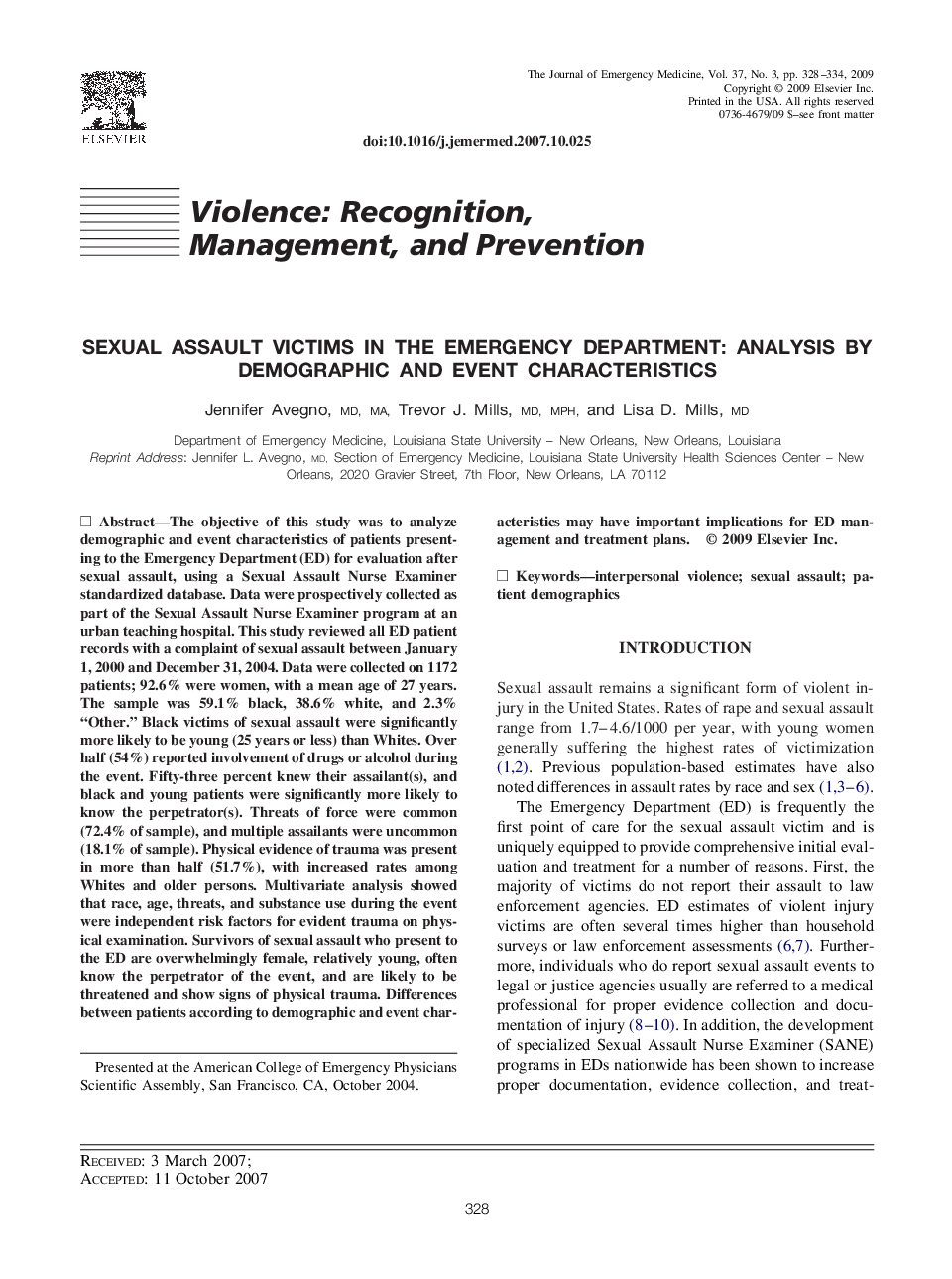| Article ID | Journal | Published Year | Pages | File Type |
|---|---|---|---|---|
| 3250371 | The Journal of Emergency Medicine | 2009 | 7 Pages |
The objective of this study was to analyze demographic and event characteristics of patients presenting to the Emergency Department (ED) for evaluation after sexual assault, using a Sexual Assault Nurse Examiner standardized database. Data were prospectively collected as part of the Sexual Assault Nurse Examiner program at an urban teaching hospital. This study reviewed all ED patient records with a complaint of sexual assault between January 1, 2000 and December 31, 2004. Data were collected on 1172 patients; 92.6% were women, with a mean age of 27 years. The sample was 59.1% black, 38.6% white, and 2.3% “Other.” Black victims of sexual assault were significantly more likely to be young (25 years or less) than Whites. Over half (54%) reported involvement of drugs or alcohol during the event. Fifty-three percent knew their assailant(s), and black and young patients were significantly more likely to know the perpetrator(s). Threats of force were common (72.4% of sample), and multiple assailants were uncommon (18.1% of sample). Physical evidence of trauma was present in more than half (51.7%), with increased rates among Whites and older persons. Multivariate analysis showed that race, age, threats, and substance use during the event were independent risk factors for evident trauma on physical examination. Survivors of sexual assault who present to the ED are overwhelmingly female, relatively young, often know the perpetrator of the event, and are likely to be threatened and show signs of physical trauma. Differences between patients according to demographic and event characteristics may have important implications for ED management and treatment plans.
